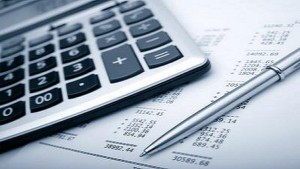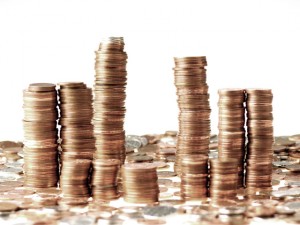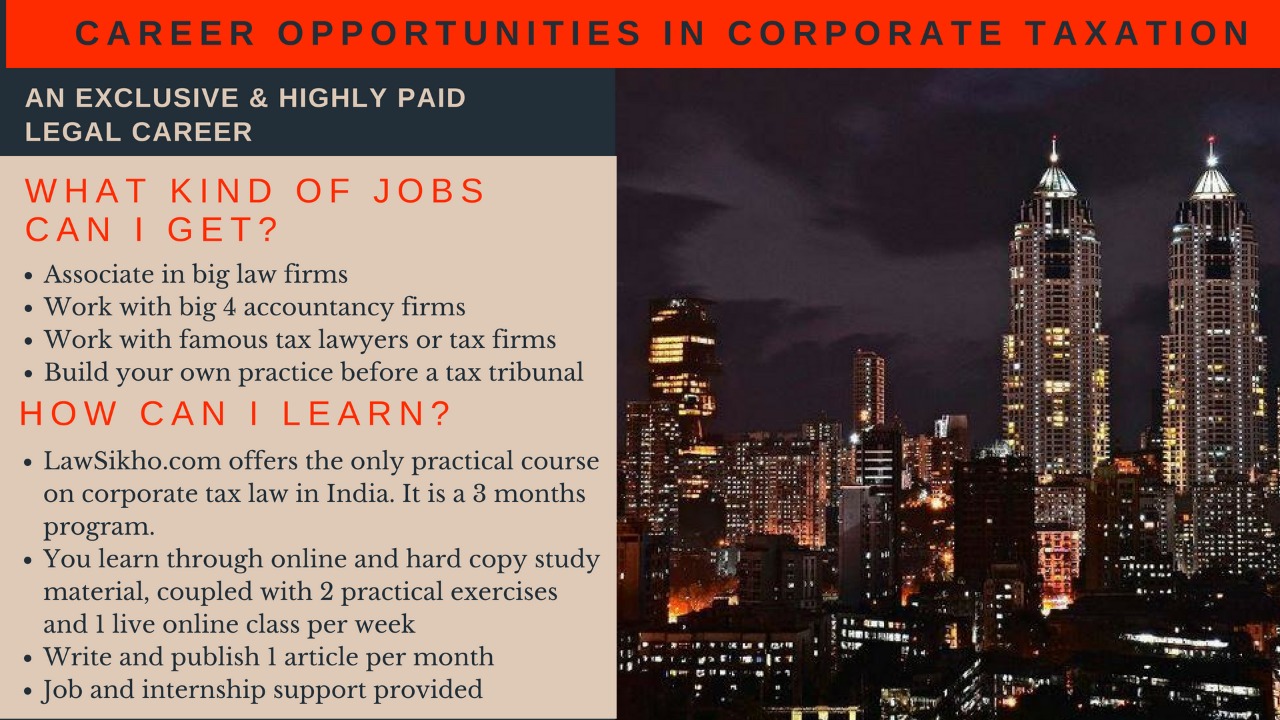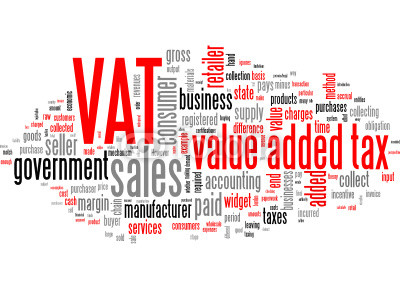What is VAT?
The Value Added Tax (VAT) in India is a state level multi-point tax on value addition which is collected at different stages of the sale. It is a compulsory payment to the government under any law. It can be charged by governments on goods, income or any activity. VAT is an indirect tax, i.e., the person paying the tax passes on the burden to another person. As Income tax is a tax on income and Service tax is levied on services, while Value Added tax is levied on sales.
Input Tax Credit (ITC)
VAT is imposed at each stage of sales on the entire sales value and the tax paid at the earlier stage is allowed as set off. This credit availability is called as input tax credit.
VAT = Tax collected on sales – Tax paid on purchases
OR
Output tax – Input tax
VAT Registration
Registration is the process of obtaining a unique number for a dealer from authorities under VAT Act.
Eligibility: Any dealer whether a trading or manufacturing business, a sole proprietorship or a partnership firm or a private limited company whose annual turnover is above Rs. 10 lakhs (Rs.20 lakhs in case of Delhi) is under compulsion to get registered with the VAT department. This limit can be reduced or increased by the State law.
VOLUNTARY REGISTRATION: A dealer not under compulsion may also obtain registration. The dealer will avail the benefit of issuing tax invoice and passing on the credit of taxes paid by on purchase of goods.
Procedure of VAT Registration
The following procedure is required to be followed for registering under VAT Act –
- Submit an application for VAT in Form 1 with the following documents –

- CST registration certificate
- Professional tax registration certificate
- Address proof and ID proof and four photographs of the Partner/Proprietor/Director
- PAN No. and Bank No. of the Partner/Proprietor/Director
- Copy of the rental agreement of the place of work
- Details of business activities
- Partnership Deed in the case of a partnership firm and MOA and AOA in the case of a private limited company.
- The concerned authority will then inspect the place of business within a specified time.
- After the inspection and on the payment of a prescribed fee to the local office, a TIN number and a VAT Registration Certificate will be allotted.
- The Act may contain provisions relating to suo moto Registration of a dealer. If the competent authority gets to know after the conduction of inspection or inquiry that the dealer who is liable to register for VAT has failed to inform the competent authority of his liability to be registered, then it may proceed to register such person under the VAT Act.
- TIN Number is different for different dealers, and it facilitates cross-checking of information. It ensures that there is no bogus or fraud invoices and other tax compliances.
Remember registration enables the entity to avail the benefit of Input Tax Credit. This is however not true in the case of certain purchases.
Exceptions to Input Tax Credit
Input tax credit shall not be allowed on the purchases of goods which are –
- Utilized in the manufacture of Exempted goods (exempted goods are those goods on which VAT is not charged, for example, Fundraising event, education, and training, etc.)
- From a registered dealer opting for the Composition Scheme*.
- Imported from Outside India.
- Where the purchase Invoice is not available.
- Included in the Negative List.
- For Personal Use.
- From Unregistered dealers as they are not empowered to issue VAT invoice.
- Where the amount of Tax is not shown separately on the invoice*.
- From other States.
Tax Invoice
For effective implementation of VAT, the invoice is mandatory. The whole structure of input tax credit is based on tax invoice, without which credit cannot be claimed. 
- Contents of tax invoice should include –
- Seller’s Name, Address, Phone number.
- TIN
- Tax Invoice Number
- Date of issue of invoice
- Buyer’s Name and Address
- Buyer’s VAT Registration No. if any
- Quantity, Description of goods, Price Per Unit, Value, VAT Rate
- Amount of tax
- Total amount payable and Signature of the selling dealer or his authorized employee.
Exempt Business
If the company is engaged in the selling of exempted goods only, then it would be an exempted business and it would not be registered under VAT and also it cannot avail any input tax credit on its purchases.
However, if the company sells, leases or lets any commercial land or property, then it has an option to waive the exemption and charge VAT at the standard rate. This is called ‘opting to tax land and buildings.’
Partly Exempt Business
An entity is partly exempt when it is registered under the VAT Act and incurs VAT on any item that is used to make exempted goods.
Special Economic Zones (SEZ)
Special Economic Zones have been established by the Government to grant incentives to exports of services and goods. These areas are specifically defined as duty-free areas. These zones are to be treated just like a foreign territory and therefore, services and goods going to any specified areas located in these Zones are treated as exports. The government has exempted all taxable goods provided to a developer of the special economic zone or units located in the Special Economic Zone. Hence, units situated in these zones are exempt from the ambit of VAT.
SEZ, STP, EHTP, and EOU are being set up to promote industry and create an industrial base. Sales to these units are treated at par with exports and therefore goods sold to them are zero rated to promote exports.
Who will not be covered by VAT?
Small Dealers: Value Added Tax will not cover businesses whose turnover is less than a certain limit. As per White Paper, VAT Act should be so designed that high taxpayers should not be spared from paying more tax, and the small dealers should be free from hassles of compliance procedures.
Dealers with limited turnover would have the option to pay a lump sum amount based on its total turnover at the specified rate as low as 0.25%. For example, in Odisha, a trader having an annual turnover of less than Rs. 2,00,000/- will not be covered under VAT, and the general tax rates will not be applied.
Composition Scheme
The conditions for a composition scheme include:
- Turnover of dealer should be within Rs. Ten lakhs to Rs. 50 lakhs.
- Such a dealer would have the option to pay a fixed amount of tax based on its gross annual turnover at the fixed rates (0.25%).
- However, following sales are not eligible for the composition scheme of VAT Act, because other Acts apply to them.
- A manufacturer or a dealer who sells goods in the course of inter-state trade. This is because the provisions of Central Sales Tax (CST) will apply to it.

- A dealer who sells goods in the course of import or export out of India, i.e., whose goods cross the boundaries of India. This is so because Custom Duty is payable on it.
- A dealer is transferring goods to the branch. Since it is not Sales and therefore no VAT shall be applicable or payable on it.
- Any other activity on which VAT Act is not applicable.
Advantages:
- It simplifies the calculation.
- A small tax would be payable.
- Return is filed less number of times.
- Simple records are required to be maintained.
Disadvantages:
- No input tax credit can be availed.
- Dealers choosing Composition Scheme cannot issue tax invoices.
For example, B follows a composition scheme, and his total turnover is Rs. 20,00,000/-. General tax rates would not be applicable to him, and he is required to pay Rs. 5,000/- (VAT @ 0.25%).
VAT and its Types
The Value Added Tax (VAT) is an indirect multistage tax that is charged as a proportion to the value-added on each stage commencing from the production of the good to its purchase by a consumer.
The following are the steps involved in the taxation of goods under the VAT system:
- The raw materials, in general, pass through various stages and processes of the production and distribution, and its entire burden lies upon the final purchaser.
- The first manufacturer’s output becomes the second manufacturer’s input who then further processes it prior to supplying it to the third manufacturer. This process continues until the emergence of the ultimate product.
- The final good so produced goes to the distributor or wholesaler, who then sells it to the retailer.
- The retailer then sells the product to the final buyer/consumer.
Usually, the manufacturer or retailer is capable of claiming tax credit but that is not the case for the final purchaser.

VAT is usually imposed by application of 3 methods
-
Addition method
In this method, the VAT is levied on the value of addition made by a manufacturer/dealer, including the profits charged by him. Value of addition includes:
- Wages;
- Salary;
- Power;
- Electricity;
- Rents;
- Depreciation in the value of capital goods,
- Manufacturing;
- Trading;
- Marketing expenses;
- Capital interests and so on.
-
Credit invoice/invoice based method
This method is a widely used method in almost all nations excluding Japan. Here the sales transactions are taxed with the customer being informed of the VAT on the final transaction. The businesses may obtain a credit for the VAT paid on input materials and services.
-
Subtraction/account-based method
In this method at the end of the reporting period, a business calculates the value of all taxable sales and deducts the sum of all taxable purchases and the VAT rate is applied to the difference. This method is presently used solely by Japan.
Features of the VAT system
- VAT is an indirect multistage tax or multipoint tax.
- VAT is levied upon value addition to the goods, i.e. (wages+interest+costs+profits).
The additional value is measurable by deducting the purchase price of inputs from the selling value of the goods.
- It is immaterial for the application of VAT whether the buyer is a dealer of goods or a consumer.
- VAT makes the promotion of neutrality, such as-
- making a decision for the purchase of goods,
- deciding the production techniques of goods,
- deciding the nature of the organization.
- VAT is a single tax and there is an absence of any education cess or surcharge.
- VAT rates are mostly uniform throughout the nation.
- The invoice has an imperative document for VAT.
- VAT is inapplicable on a seller with less than 5 lacs of annual sales turnover.
- Under the VAT system, credit of input taxes is only permitted if proper records are kept and maintained with respect to various capital goods input.
- VAT has ensured transparency because it shows the amount of VAT paid to the buyer on sales.
- VAT helps in deciding its rates of fixation. It also shows the Government the amount of tax collected at each and every stage, initiating from the production to sales.
- VAT is inapplicable on exportation, but the exporter can obtain refundment of input tax credit.
- In VAT there is no scope of tax evasion and therefore it generates a higher amount of revenue, in comparison to other forms of taxation.
VAT Calculation
VAT = Output Tax – Input Tax.
Output tax is the percentage of the selling price accrued by the seller from the selling of the final good.
Input tax is the percentage of cost price paid by a buyer for acquiring essential raw materials for producing the final goods.
For example – John is a carpenter who purchased wood Rs 2000 and paid an input tax of 10% = Rs 200.
He made a wooden table out of the purchased wood and sold it for Rs 3000. On this, he collected an output tax of 10% on the selling price, i.e. Rs 300.
Therefore, the final VAT payable: Rs 300 – Rs 200 = Rs 100.
Advantages and Disadvantages of the VAT system
Advantages
- Reduced tax evasion and increased tax compliance.
- VAT is simple and thus brings certainty.
- VAT is transparent as the amount of VAT levied is clearly displayed on the bill or invoice.
- Cheaper exports in case of exportation.
- VAT is refundable.
- VAT has a better accounting system as the record of tax paid on purchases are required maintenance.
- VAT is tax neutral as there is no distinction between labour-intensive industries and capital-intensive industries since the input of both capital products and purchases is available.
Disadvantages
- Although mentioning in the invoices reduces tax evasion, yet it is still possible through the generation of fake invoices.
- Increased compliance cost, because of the maintenance of purchase and sell records.
- This system has distortion as it is improperly due to several exemptions/concessions.
- VAT being a consumption-based taxation system leads to higher tax collection by the State consuming more rather than the State making higher production.
- Being taxation on the expenses, it is regressive in nature. The poor are more affected by this as they incur more expenses compared to the rich.
VAT Rates in India
The VAT Rates in India differ based on the type of goods and from one State to another. Thus, it is important for the Entrepreneur to be aware of the State’s VAT regulation. However, VAT Rates in India can be categorized into 3 main parts, which have uniformity in many States.
NIL VAT Rate
In many states, the items sold by the unorganized sector in natural or unprocessed format, and basic goods for the poor are listed under the VAT exemption category. Some of the items capable of availing VAT exemptions in many States include-
- Aids used by handicapped persons,
- Glass or plastic bangles,
- Condoms,
- Firewood,
- Khadi,
- Salt, etc.
1% VAT Rate
In many states, 1% / 2% VAT rate is applicable to precious stones, metals like silver, gold, and platinum, bullions, jewellery, etc.
4% or 5% VAT Rate
Many states have adopted a VAT rate of 4% or 5% over a large number of products related to basic necessities. Some of the goods included in this category in many of the States including coffee, coir, cotton, edible oils, medicines, drugs, agricultural implements, etc.
General VAT Rate
In addition to the above VAT Rates, many states also have other VAT levels that rely upon the Goods. Very high VAT Rate of over 20% is generally levied for goods such as imported liquor, cigarettes, etc. Many states have a VAT rate of around 12.5% applicable to the goods which cannot be categorized under any of the previous heads. These categories of goods not falling in any of the other categories are usually taxed at 12.5% / 14% / 15% depending on the State levying it.
VAT on imports and exports
Customs Duty
Customs duty is the tax levied on the importation and exportation of a good or goods to or from India. The government uses this duty to generate its revenues, safeguard domestic industries and regulate the movement of goods in the economy.
The rate of customs duty varies based on the place of the production of a particular good and the purpose of its production.
The following are the different types of customs duty:
- Basic customs duty – this duty is imposed on the value of the goods at a specific rate. The duty is fixed at a specified rate on an ad-valorem basis, i.e. its imposition is based on the transactional or proprietary value and is imposed during the time of transaction. The Central Government is entitled to the right of exempting any goods from the tax.
- Countervailing duty – This duty is imposed by the Central Government when a Country is subsidizing the exporters who are exporting goods to India. This amount of duty equals the subsidy paid by them.
- Additional Customs Duty – For equalizing the imports with local taxes like service tax, VAT and other domestic taxes, a special countervailing duty is imposed on imported goods. Hence, is imposed to bring imports on an equal track with the goods produced or manufactured in India. This is to promote fair trade & competition practices in our country.
- Safeguard duty – For safeguarding the domestic industries from the effects of imported goods, the Government imposes safeguard duty on certain imported items. This tax is collected on the basis of the loss incurred by the domestic/ local industries.
- Anti-dumping Duty – Often, large manufacturers from abroad may export goods at very low prices compared to the prices in their domestic market. Such dumping is often intended towards crippling the domestic industry or to dispose of the excess stock. This is known as goods dumping.
For the prevention of these sorts of dumping activities, the Central Government can impose anti-dumping duty up to the margin of dumping on certain items, under Section 9A of Customs Tariff Act, if the dumped goods are being sold at a lesser price than its normal value. Levy of such anti-dumping duty is allowed as per the agreement under the World Trade Organization. Anti-dumping action can be taken solely if there is an Indian industry producing a resembling form of good.
Imports
Usually, goods are imported into India after the payment of the customs duty. Therefore VAT is inapplicable on imported goods until and unless such goods are being sold in the Indian Market.
For example – Mr Rajan, a resident of Tamil Nadu, imports a smartphone into India from the U.S.A, priced at Rs 30,000 INR. Now for the smartphone, if there is a customs duty of 20% then Mr Rajan shall have to shell out 36000 INR. However, if he wants to resell the smartphone in the market of his State where the VAT rate is 15 %, the selling price will amount to 41,400 INR.
Exports
No VAT is charged on the exportation of goods from India as Customs duty is already levied on the products being exported outside India.
For example, If Mr Singh decides to export 10 kg of apples to the United Kingdom which costs a nominal price of 120 INR/ Kg then the price shall amount to 1200 INR. Now if there is a customs duty of 5 % on such export then the price shall amount to 1260 INR which he shall have to pay the customs. Here, no VAT shall be imposed on the apples as they are not going to be sold in the Indian Market.
Conclusion
The VAT Act of all the states prescribes certain limit of annual turnover. If the annual turnover of the dealer exceeds the prescribed threshold limit, then he is required to register himself under VAT. The threshold limit varies from State to State.
Also, Registration may be done voluntarily or compulsorily. A dealer may choose to be voluntarily registered as he will then be allowed to avail the benefit of Input Tax Credit (ITC).
If the dealer is liable to register himself under VAT but fails to get himself registered then the competent authority after conducting the survey, inspection or inquiry may on its motion proceed for the registration of the concerned dealer.
The Act also prescribes for the relaxation available to the small dealers and the one opting Composition Scheme.
LawSikho has created a telegram group for exchanging legal knowledge, referrals and various opportunities. You can click on this link and join:
 Serato DJ Crack 2025Serato DJ PRO Crack
Serato DJ Crack 2025Serato DJ PRO Crack










 Allow notifications
Allow notifications




Very informative. Thanks!